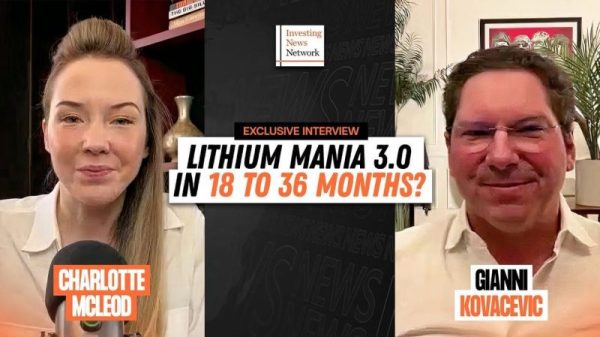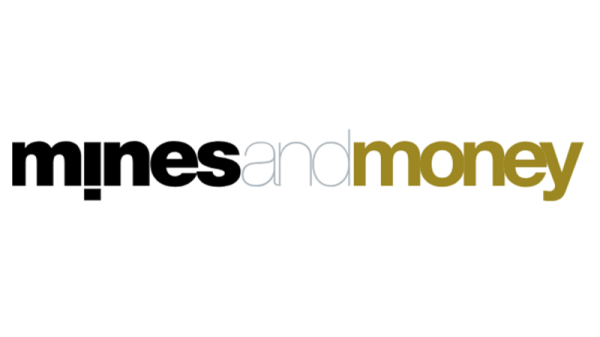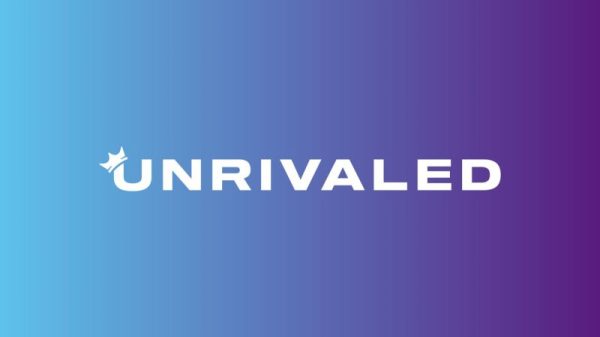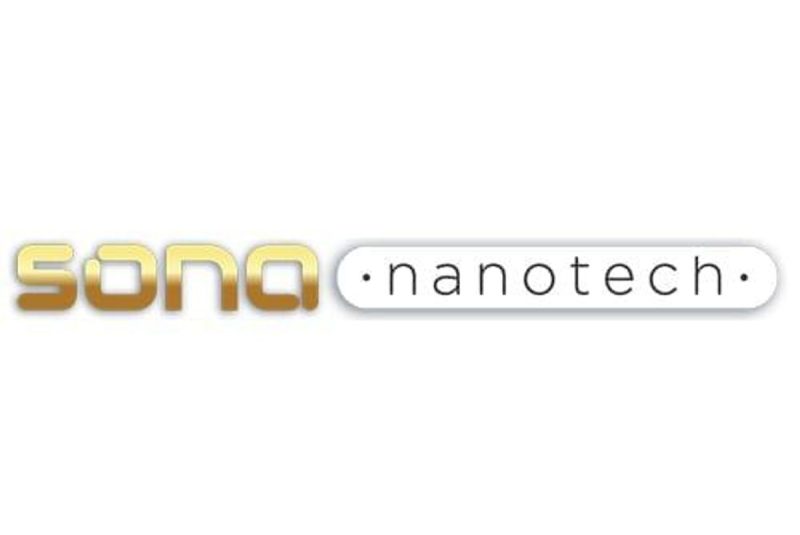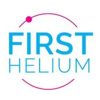Overview
Halifax, Nova Scotia-based Sona Nanotech (CSE:SONA, OTCQB:SNANF) is advancing nanotechnology medicine through its proprietary gold nanorods that promise to change the face of cancer therapy
Modern nanotechnology has some very real — and very promising — applications in medicine. It can help make novel diagnostic instruments, imagery and methodologies significantly more effective. It can help physicians deliver treatments and medications with improved safety. And, when combined with other technologies such as predictive analytics and artificial intelligence, nanotechnology can offer a better prognosis, diagnosis and treatment for a multitude of complex conditions.
Most of these use cases are made possible through a material known as a nanoparticle, a near-atomic-scale piece of matter that can be manipulated in a variety of different ways.
Sona Nanotech has, for the past several years, been hard at work developing and operationalizing its biocompatible nanoparticle technology for use in targeted cancer therapy. Biocompatibility is key to the application of nanotechnology in medicine. Because nanomedical devices and materials are still relatively new, both medical and regulatory agencies are still working to understand their impact on the human body.
Sona Nanotech’s platform technology leverages uniquely biocompatible gold nanorods (GNRs). Measuring between 10 and 100 nanometres in length, these rod-shaped nanoparticles are produced by chemical synthesis and can be conjugated to a multitude of different molecules. This gives them an impressive range of applications, including antibacterial activity, drug delivery, diagnostic imagery, immunoassay and biosensing.
Currently, Sona Nanotech is developing a targeted cancer therapy, leveraging its proprietary Targeted Hyperthermia Therapy (THT) to directly treat cancer cells. A form of photothermal therapy, THT uses harmless near-infrared light for heat generation. When the non-thermal energy generated by the IR light interacts with Sona’s GNRs, it is converted to gentle heat, killing cancer cells and thereby destroying tumors from the inside out. The gentle ~44-degree Celsius heat generated also increases tumor perfusion while also stimulating the immune system. It does no damage to healthy cells, which can tolerate heat of up to ~52 degrees Celsius, eliminating the collateral damage to surrounding healthy tissues that typically result from radiation or chemotherapy treatments.
The first targeted application of this technology will be for colorectal cancer treatment, expected to be enabled through Sona’s US$8.65-million acquisition of Siva Therapeutics. Said acquisition will allow Sona to secure a cancer treatment model along with a functional infrared light device. It’s a complete game changer, enabling Sona to progress both Siva’s technology and its own.
Colorectal cancer is currently the fourth most-diagnosed type of cancer in Canada. Although treatment and diagnosis of the condition have both come a long way in recent years, there is still a long way to go. There are still many barriers to screening and colorectal cancer remains the second leading cause of cancer death worldwide.
Sona is incredibly well-positioned to address these challenges and roadblocks. Its GNR technology has already undergone a multi-stage independent assessment by the U.S. National Cancer Institute’s Nanotechnology Characterization Laboratory. Results, thus far, have been incredibly promising, detecting no microbial contamination or endotoxins.
Sona also recently announced plans to embark on an innovative research partnership with the Giacomantonio Immuno-Oncology Research Group to assess the efficacy of its THT technology for both cancer treatment and the facilitation of systemic immune responses.
It’s not just Sona’s proprietary technology that makes it so promising, either. The company’s management team is incredibly impressive, led by experts from across the healthcare industry. Arguably one of the most notable is chief scientific officer Dr. Len Pagliaro, a professor of bioengineering and medicine with over 24 years of experience in biotech products and licensing.
Its board of directors also include: Mark Lievonen, co-chair of Canada’s COVID-19 Vaccine Taskforce; Walter Strapps, CSO of Liberate Bio; and Neil Fraser, who serves on the Canadian Chamber of Commerce’s Life Sciences Strategy Council and Health Canada’s Advisory Panel on Health Innovation.
Company Highlights
Canadian nanotechnology company, Sona Nanotech has developed an incredibly promising new technology that leverages uniquely biocompatible gold nanorods.The company also plays a key role in the advancement of photothermal medical therapies, particularly enabled by the company’s acquisition of Siva Therapeutics. This acquisition has allowed Sona to advance the development of Targeted Hypothermia Therapy, addressing many of the risks with current cancer treatments — particularly the damage they can cause to other tissues. THT has already proven effective in reducing tumors in small animal studies. Sona’s initial target for the technology will be colorectal cancer.Rapid diagnostic tests represent the company’s other strategic area of focus, including bovine tuberculosis detection and concussion screening. Future applications for Sona’s technology could include:Targeted drug deliveryPhotothermal cosmetic therapyCell imagingAdditional proprietary testing solutions supported by third-party test development services. The company’s leadership and board of directors comprise experienced professionals from across the healthcare and biotechnology sectors.Sona has a clear roadmap to commercialization of its treatment methodology, starting with a near-term catalyst in large animal studies before moving to a human pilot. It also expects a De Novo pathway for medical devices.
Key Technologies
Gold Nanorods (GNR)
Sona’s GNRs are rod-shaped nanoparticles made of gold and measuring from 10 to 100 nanometers in length. Produced by chemical synthesis, they directly address many of the current limitations of medical nanoparticle technologies. In addition to making them well-suited for cancer treatment, this also unlocks their potential for use in in-vivo medical applications.
Highlights:
Uniquely Biocompatible: Gold nanorod production is typically facilitated through CTAB — a known toxin with the potential to cause cell necrosis. Sona’s surfactant uses no CTAB, yet can produce heat in the same way as traditionally manufactured GNRs. This makes the technology potentially more suitable for use within the body. Shaped and Stable: Traditional nanoparticles are shaped like spheroids, stars or shells. All three of these shapes have limited surface area, stability and penetration depth. Gold nanorods not only have a larger surface area but also a stabler surface and longer shelf life. They are also available in a variety of lengths and widths.High Color Intensity: Sona’s GNRs display complex light polarization and novel optical properties, leading to enhanced sensitivity in lateral flow tests. This makes them well-suited for use in diagnostic imaging.Potential Use Cases: Other possible applications of Sona’s GNRs include:Photothermal therapyTumor targetingAntibacterial activityDrug deliveryDiagnostic markers for imagingImmunoassay and biosensing Esophageal cancerBladder cancerProstate cancerPancreatic cancerUterine cancer
Targeted Hyperthermia Therapy
Current cancer treatments are risky, expensive and potentially harmful. Chemotherapy and radiotherapy, for instance, are completely non-selective in cell destruction. Advanced therapies are frequently beyond the price point of most patients, while manual surgery is incredibly risky. Enabled by Sona’s transformative acquisition of Siva Therapeutics, the company’s Targeted Hyperthermia Therapy represents a potential solution to all three of these problems.
The treatment uses intravenous injection of GNRs to target heat directly to tumors, heating and destroying them from the inside out. Because it’s so highly targeted and achieves hyperthermia instead of higher temperature ‘ablation’, it’s able to selectively destroy cancer cells with minimal damage to surrounding flesh. As mentioned above, the treatment also uses uniquely biocompatible GNRs.
Colorectal cancer represents the first target application of this new treatment methodology. There is a significant addressable market of patients for which alternatives greatly diminish quality of life.
Highlights:
Overview: THT consists of two components — gold nanorods and an infrared light source. By heating tumors, it stimulates the immune system, kills cancer cells and shrinks tumors while increasing perfusion. Effectiveness: THT is highly effective for several reasons:Nanorod concentration in solid tissues such as colorectal tumors is up to seven times higher than in non-tumorous tissue. Healthy cells can withstand temperatures of up to 52 degrees Celsius, while cancer cells are destroyed at 44 degreesThe technology works from the inside of the tumor outwards through heat shock protein synthesis.Validation: Siva has had major success in reducing tumors in small animal studies, shrinking cancerous growths in mice in just four weeks. Their materials have also been assessed by the Nanotechnology Characterization Laboratory. Finally, both third-party and in-house testing have confirmed that the company’s GNRs are biocompatible. Treatment Process: THT is planned to work as follows:Step One: Billions of specialized gold nanorods are injected into the patient’s bloodstream.Step Two: The GNRs concentrate in tissues throughout the body, with their concentration being particularly high in tumors. Step Three: Tumors are treated for ten minutes with an infrared light set to the same wavelength as the nanorods.Step Four: The IR light energy causes the nanorods to vibrate, producing sufficient heat to kill the cancer cells while leaving healthy cells undamaged.
Diagnostics
In addition to cancer treatment, Sona is also developing a range of GNR-based diagnostics through the use of Lateral Flow Assays. These simple, fast and low-cost diagnostic tools rely on nanoparticles that can be administered directly at the point of care.
Combining them with Sona’s GNRs allows for multiple test lines per unit, easier to read results from small samples and potentially greater sensitivity in detecting trace amounts of biomarkers. Currently, it is exploring two primary test prototypes: concussion screening and bovine tuberculosis. The next step for both prototypes involves validation with clinical samples and clinical trials.
Management Team
David Regan – CEO
As the chief executive Officer of Sona Nanotech, David Regan is responsible for business and commercial operations oversight. A strategy consultant and corporate director, Reagan has over 15 years of public company experience in strategy, IR and corporate development. He holds an MBA from INSEAD and a BBA with Hons from St. Francis Xavier University.
Len Pagliaro – CSO
A professor of bioengineering and laboratory medicine at the University of Washington, Dr. Len Pagliaro is the chief science officer of Sona Nanotech, with over two decades of experience with biotechnology products, services and licensing. During his four years at Biolmage, he worked on a commercialization strategy that took the company from concept to a $26-million P&L in just four years.
Darren Rowles – Head of Diagnostics
Darren Rowles has seventeen years’ experience with nanoparticle diagnostics with a company that grew nanoparticle sales from $200,000 to $5.5 million with a ~$ 4 million profit. In addition to his role at Sona, he is an advisory board member to Gold Conference and multiple university collaboration projects. Rowles has an MBA from Bath University and a BsC in biomedical science and toxicology from Cardiff Metropolitan University.
Kulbir Singh – Co-founder/Head of GNR R&D
A named author on 35 research papers and two patents, Dr. Kulbir Singh is responsible for GNR development. He holds a PhD. in chemistry from Guru Nanak Dev University. Singh is also co-founder of a science-based consumer products company.
Robert Randall – CFO
A registered CPA, Robert Randall has extensive public company experience as a CFO with organizations including Torrent Capital (CVE:TORR), Antler Gold (CVE:ANTL) and ExeBlock Technology (CSE:XBLK). He holds a bachelor’s degree in commerce from St. Mary’s University with a chartered accountant designation with Coopers and Lybrand Chartered Accountants dating back to 1987.
Mark Lievonen — Chair
Formerly the president of Sanofi Pasteur, Mark Lievenon serves as co-chair of the Government of Canada’s COVID-19 Vaccine Task Force. He is also a director of OncoQuest Pharmaceuticals (KRX: 078590), Biome Grow (CNSX:BIO) and the Gairdner Foundation. Lievenon holds both an MBA and an FCPA.
Walter Strapps — Director
Walter Strapps is the CSO of Liberate Bio, a biotechnology company using machine learning, advanced chemistry and molecular biology techniques to identify novel delivery vehicles for oligonucleotides. He has also served as CEO of Carver Biosciences, chief scientific officer at Gemini Therapeutics (NASDAQ:GMTX) and head of discovery at Intellia Therapeutics (NASDAQ: NTLA), in addition to working with RNA Therapeutics. Strapps holds an MA, M. Phil. and Ph.D.
Neil Fraser — Director
A member of the Canadian Chamber of Commerce’s Life Sciences Strategy Council, Neil Fraser is also the former president of Medtronic Canada. He is part of Health Canada’s Advisory Panel on Health Innovation, which is chaired by Dr. David Naylor. Finally, Fraser is also a director at CloudMD (CVE: DOC).
Dr. Michael Gross — Director
Dr. Michael Gross is a professor of orthopedic surgery and medical director of the Regional Tissue Bank. He also serves as current director of Fortune Bay (CVE:FOR) and a chair at Boomersplus.
James Megann — Director
James Megann has 25 years of experience in venture capital, capital markets and marketing. As managing director of Numus Financial, he has overseen over $1.5 billion in transactions. He also serves on the board of Torrent Capital.

